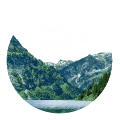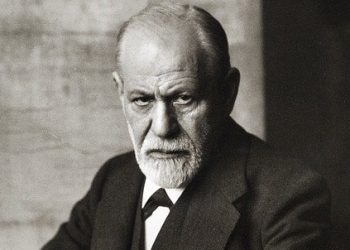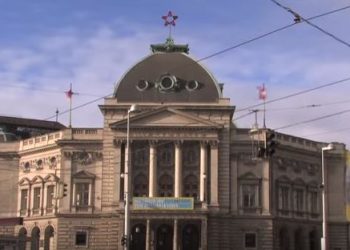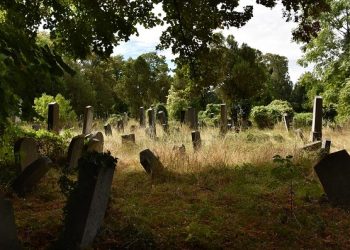The Natural History Museum in Vienna (Naturhistorisches Museum) is located in Maria-Theresien-Platz in the city’s first district. It is right on the Ringstrasse, a short walk from other important sites like the Hofburg Palace, the Parliament building and City Hall, the Museum Quarter, and the Volkstheater. Across from the Natural History Museum is another important museum, the Art History Museum.
The two museum buildings are completely identical, and many tend to confuse them.
How do you identify the correct museum building in Maria-Theresien-Platz?
When looking from the direction of the Ringstrasse (with your back to the Hofburg Palace), the Natural History Museum is on the right, and the Art History Museum is on the left.
In this article, you can read comprehensive information about the museum: the story of its establishment, the various exhibitions, and of course, all the essential information for your visit.
- The Story of the Museum
- The Museum’s Collections
- The Permanent Exhibitions
- Essential Information for Your Visit
The Story of the Natural History Museum
In 1871, Emperor Franz Joseph I ordered the construction of a magnificent museum complex (a plan that was never fully realized). He entrusted the construction and design to the architects Gottfried Semper and Carl Hasenauer. From 1871 to 1891, the two architects worked on the construction of two large museum buildings, one opposite the other, on either side of Maria-Theresien-Platz. The elaborate buildings were designed just like the Habsburg palaces, with spacious rooms, beautifully decorated walls, ceiling paintings, marble floors, and royal furniture. The facade of the Natural History Museum features statues and figures representing human progress in the natural sciences and the power of nature. At the top of the building, the words “To the realm of nature and its exploration” are inscribed in gold.
After the completion of the museums’ construction in 1889, a festive ceremony was held where Emperor Franz Joseph announced the official opening of the Natural History Museum and the Art History Museum.
The Museum’s Collections and Exhibits
The members of the Habsburg family were known for their great love of collecting valuables, antiquities, and also everything related to the kingdom of nature. The exhibits displayed in the 39 exhibition rooms are part of the Habsburg collections, gathered over 250 years! The entire collection comprises about 30 million objects (most of which are not on display).
Among the most famous exhibits is a prehistoric statuette of a woman known as the Venus of Willendorf. According to researchers, the figurine, found in the Wachau Valley near Vienna, is 29,500 years old. Additionally, there is a taxidermy of a Steller’s sea cow, which went extinct 200 years ago, and giant dinosaur skeletons. The museum’s meteorite collection is considered the largest and oldest in the world.
You can watch some of the museum’s collections in the following video:
The Permanent Exhibitions
The museum building consists of two floors divided into different exhibition halls. The first floor is divided into several different displays. The first display, located near the entrance, showcases gemstones, minerals, and meteorites (the largest collection in the world). The second display on this floor is of fossils and dinosaur skeletons. The third display on this floor is about the Ice Age. The last display deals with evolution and human development. At the far end of the floor is the new Planetarium building, an observatory where films related to the galaxy and the study of the stars are screened.
On the upper floor (Hochparterre), there are many displays of taxidermied animals collected from all over the world. Among the animals are numerous insects, land mammals, and aquatic animals. Some of the taxidermied animals are completely extinct from the world.
Here is a map of the exhibitions in the museum:
Essential Information for Visiting the Natural History Museum
Opening Hours:
- Tuesdays: Closed
- Wednesdays: 9:00 AM to 8:00 PM
- Thursdays to Mondays: 9:00 AM to 6:00 PM
Please note: Entry is possible up to half an hour before closing.
On December 24th, the museum is open until 3:00 PM. On December 25th and January 1st, the museum is closed.
Admission Cost:
- Adult: €18
- Child up to age 19: Free. Children under 10 must be accompanied by an adult.
- Students (up to age 27): €14
- Seniors: €14
You can purchase tickets online at the museum’s website.
Virtual Tour of the Museum: If you don’t feel like entering the museum but would like to see everything inside, you can enjoy a digital tour of the museum’s rooms.
Address: Burgring 7, 1010 Wien
How to get there by public transport?
Due to the museum’s central location, it can be easily reached from all the main attractions in the first district. Whether you are visiting the Hofburg Palace or its royal gardens, or you are at the Parliament and City Hall, you can walk along the Ringstrasse until you reach the museum.
If you are arriving by public transport, you can take the subway, the orange line (U3) or the purple line (U2), and get off at the Volkstheater station. From there, you will have to walk for about 4 minutes to the museum.
Another option is to take the trams that run on the Ringstrasse and get off at the Dr. Karl Renner Ring/Burgring stop. Tram lines 1, 2, 46, 49, 71, and D stop at this station. From there, it is a 5-minute walk to the museum.
Map:
If you are planning to visit this museum, you should also read about the Art History Museum, which is located right across from it, and you can combine a visit there as well.


















